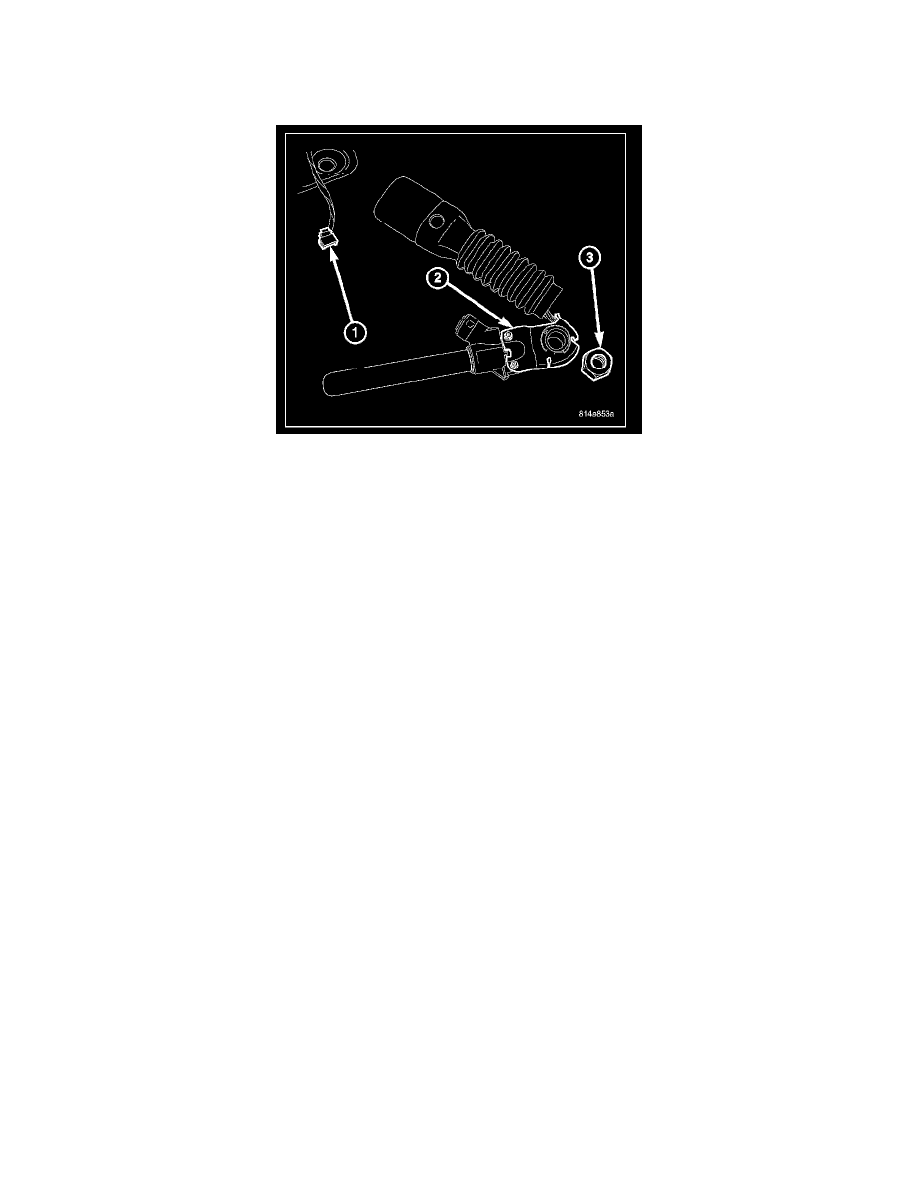Commander 4WD V8-4.7L VIN N (2006)

Seat Belt Tensioner: Description and Operation
SEAT BELT TENSIONER
DESCRIPTION
Seat belt tensioners supplement the dual front airbags for this model. The seat belt tensioners are integral to the front seat belt buckle units, which are
secured by a large hex nut (3) to a stud on the outside of the inboard seat cushion frames of the right and left front seats. The tensioner is concealed
beneath the molded plastic inner seat cushion side shield. The seat belt tensioner consists (2) primarily of a buckle, an accordion-like molded plastic
scabbard, a cable and piston, a pulley and bracket, a steel cylinder tube, and a small pyrotechnically activated gas generator. Except for the buckle and
scabbard, all of these components are concealed by the seat cushion side shield. The seat belt tensioners are controlled by the Occupant Restraint
Controller (ORC) and are connected to the vehicle electrical system through a dedicated take out of the seat wire harness by a keyed and latching yellow
molded plastic connector insulator (1) to ensure a secure connection. The seat belt tensioners for many vehicles have a second connection through a
two-wire pigtail and connector to the seat wire harness for an integral seat belt switch. Many vehicles, including those equipped with the optional
Occupant Classification System (OCS) have a seat belt switch in both front seat belt buckles. Some vehicles without the OCS have a switch in the driver
side front seat belt buckle only.
The seat belt tensioners cannot be repaired and, if faulty or damaged, the entire front seat belt buckle unit must be replaced. If the front airbags have been
deployed, the seat belt tensioners have also been deployed. The seat belt tensioners are not intended for reuse and must be replaced following any front
airbag deployment.
OPERATION
The seat belt tensioners are deployed in conjunction with the front airbags by a signal generated by the Occupant Restraint Controller (ORC) through the
driver or passenger seat belt tensioner line 1 and line 2 (or squib) circuits. When the ORC sends the proper electrical signal to the tensioners, the
electrical energy generates enough heat to initiate a small pyrotechnic gas generator. The gas generator is installed in one end of a steel cylinder tube
where the piston attached to one end of the buckle cable is sealed to the inside circumference of the tube. As the gas expands, it pushes the piston down
the tube, pulling the cable around the pulley, drawing the buckle downward, collapsing the scabbard, and removing any excess slack from the seat belt.
Removing excess slack from the front seat belts not only keeps the occupants properly positioned for an airbag deployment following a frontal impact of
the vehicle, but also helps to reduce injuries that the occupant might experience in these situations as a result of harmful contact with the steering wheel,
steering column, instrument panel and/or windshield. Also, a torsion bar in the seat belt retractor that the retractor spool rides upon is designed to deform
in order to control the loading being applied to the occupants by the seat belts during a frontal impact, further reducing the potential for occupant
injuries.
The ORC monitors the condition of the seat belt tensioners through circuit resistance, and will illuminate the airbag indicator in the Electromechanical
Instrument Cluster (EMIC) and store a Diagnostic Trouble Code (DTC) for any fault that is detected. For proper diagnosis of the seat belt tensioners, a
diagnostic scan tool is required.
